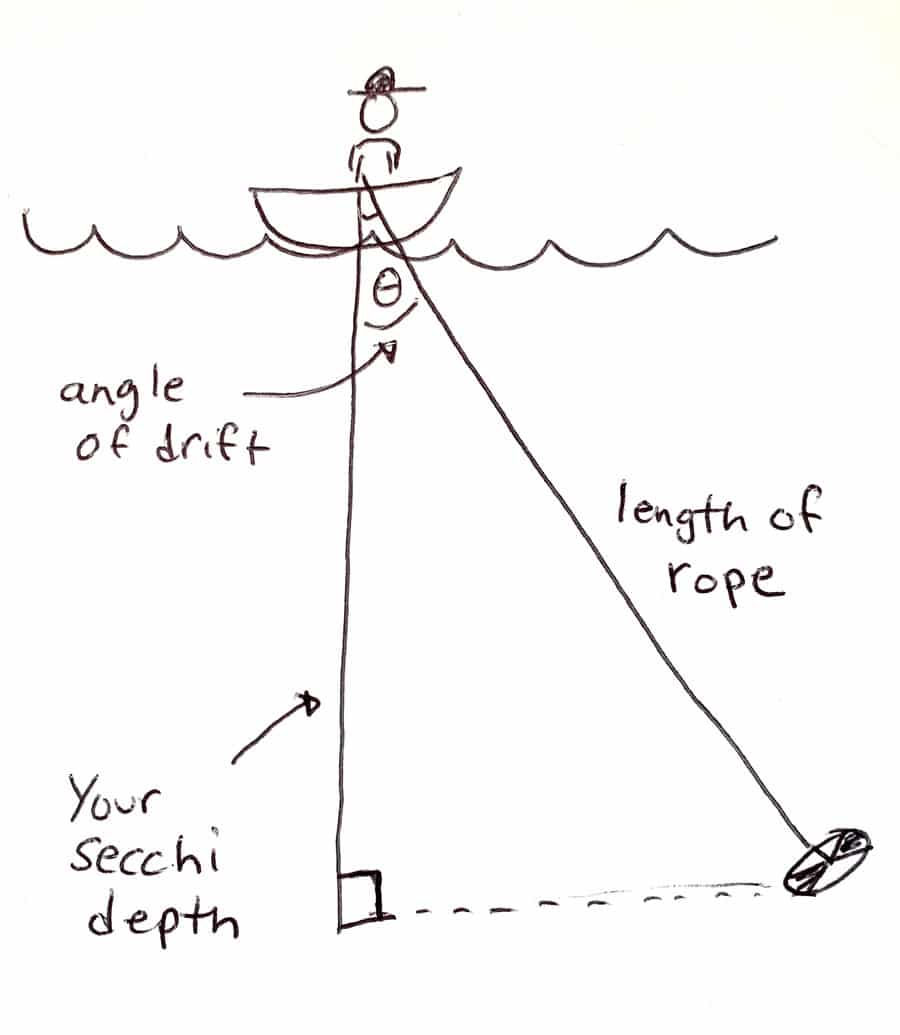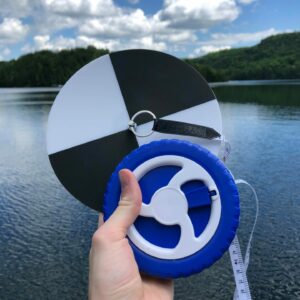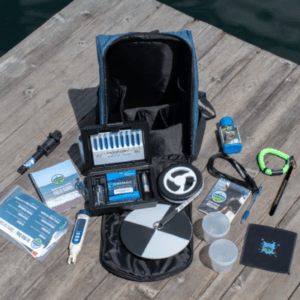Water clarity (Secchi)
What is water clarity?
Secchi readings are an effective way to monitor water clarity in lakes and oceans, but not so helpful for shallow areas or streams.

Why is water clarity important?
Completely natural as well as man made content can affect water clarity. Be sure to note if you’ve had a recent rainfall or if you’ve noticed unusual events near the test site. Your water clarity can be affected by:
- A recent rainfall that has stirred up the bottom
- How much sediment is suspended
- Algae blooms
- Natural mixing
- Construction, dumping or pollution sites
What does a water clarity measurement mean?
Baseline testing is important as each body of water will have unique factors contributing to water clarity. Some very healthy lakes will have very low readings if they are naturally muddy or coloured. Recording in the same place over time will give you a more accurate picture of what is normal for your body of water.
Some common values
| Swamps/ponds | > 0.5m |
| Murky lakes | > 0.5 – 1m |
| Typical rivers | 1m – 2.5m |
| Typical lakes | 1m – 8m |
| Very clear lakes | 10m – 60m |
| Ocean water* | 1m – 80m |
*Ocean water is measured with a bigger secchi disc (measuring 30cm x 30cm), since readings can be so big.
Turbidity or Secchi depth? Which measurement should I use?
Turbidity and Secchi depth are both measures of water clarity, however one may be more suitable than the other depending on the conditions of the water you are testing.
When to use Secchi depth:
- water bodies with low to moderate levels of turbidity when you can see the bottom
- slower-moving water bodies, like lakes, ponds and large rivers
When to use turbidity:
- water bodies that appear cloudy or opaque
- shallow and/or fast moving water bodies where a Secchi disk would be ineffective
Water Rangers testing protocol
Water Rangers uses a standard 20cm disc used for freshwater, with a marked rope. In previous years, we’ve used the standard half-meter/full meter marking method, but this year are transitioning to a measuring tape. You can get one from us, or you can make your own. Watch this video explanation of testing with a Secchi disk.
- Lower the disk slowly into the water in a sunny area, not shaded by the boat or by you, letting it drop straight down.
- Once you can’t see it any longer, raise it back up a little bit until you can see it again, and then lower it back to the point where you can’t view it any more.
- Grab rope at the water to mark your spot. Record your readings in meters. Since this is a visual test, round to the closest tenth of a meter (e.g. 1.3m).
How to test for secchi depth
Fast moving water causing your rope to move diagonally? If you can estimate the approximate angle, you can use this little tool to calculate your ‘real’ secchi depth.
Secchi Depth Calculator
Length of rope: m
Angle of drift: °
Your secchi depth: 0m
This is calculated using pythagogean’s theory, based on the right angled triangle. The equation is:
height = rope length x cos(angle)

Taking care of your secchi disc
- Black paint gets worn off the top? You can repaint with non-toxic outdoor paint.
- Ropes should be left out between testing to dry.
- If you’re testing in suspected pollution, rope and disc should be cleaned and dried in the sun.
Get a Secchi disk here or as part of a testkit:
-
 Secchi disk$65.00
Secchi disk$65.00 -
Product on sale
 Ocean Explorer TestkitOriginal price was: $305.00.$290.00Current price is: $290.00.
Ocean Explorer TestkitOriginal price was: $305.00.$290.00Current price is: $290.00. -
 Freshwater Explorer Testkit$305.00
Freshwater Explorer Testkit$305.00
Contributing to the community!
Water Rangers is citizen-scientist led. So, if you have any questions, ideas, or notice any errors, please tell us!
